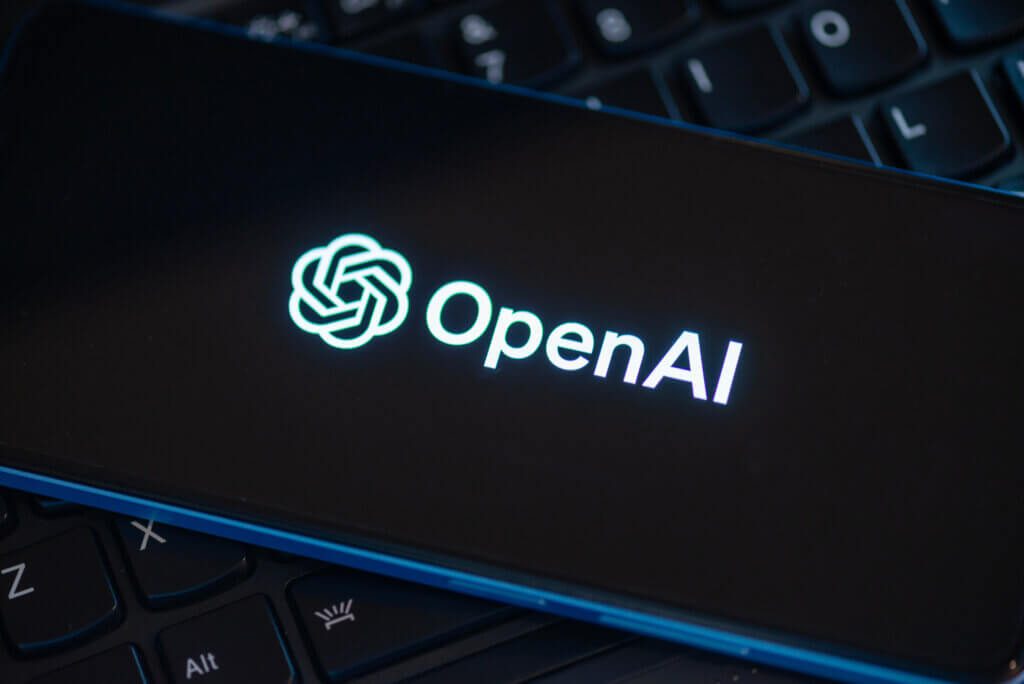Some foundations still matter—a lot. In fact, AIO (AI Optimization) rewards much of what SEO best practices have been preaching for years. But here’s the twist: those same elements are now table stakes, not differentiators.
As of Q1 2025, over 13% of Google queries now return AI Overviews—and with Google’s AI Mode now rolling out to U.S. users, we’re moving from keyword results to curated conversations.”
Table of Contents
Here’s what still pulls weight in the AI era:
1. Technical Excellence
Fast-loading, mobile-optimized, crawlable pages? Still non-negotiable. AI tools don’t love your site because it’s flashy—they love it because it’s fast and functional.
2. Topic Clustering
If you’ve invested in pillar pages and internal linking strategies, good. AI tools—especially those summarizing or citing content—prefer comprehensive resources that show topical depth. They want one hub, not a mess of scattered thoughts.
3. Clear Writing that Answers Questions
LLMs are voracious readers—but they’re also picky eaters. They parse content for structure and clarity. If your copy is already written to teach, explain, or guide a human, that structure serves AI just as well.
4. Schema Markup
Think of structured data as your site’s resume. Schema helps LLMs understand what your content is—not just what it says. In an AI-first discovery world, the sites that label themselves properly get more callbacks.
Schema isn’t just helpful—it’s foundational. Structured data is one of the clearest signals LLMs rely on to interpret real-world relationships between topics, products, and entities.
5. FAQs, How-To Guides, and Lists
These formats are still SEO-friendly, but they’re also LLM fuel. When AI tools summarize or cite content, they lean toward modular, digestible formats. If you’re building answer-ready content, you’re already speaking the language of AIO.
What No Longer Works (or Needs to Evolve)
If traditional SEO is your comfort zone, brace yourself. Some of the tactics that once worked like a charm are now—at best—ineffective, and at worst, invisible to AI.
This isn’t about burning down the playbook. It’s about knowing which plays won’t move the ball anymore.
1. Keyword Stuffing Without Intent
Yes, keywords still matter. But LLMs aren’t fooled by a pile of terms duct-taped to a blog post. If your content exists to “rank,” not to help, AI isn’t buying it—and neither is your audience.
2. Content for the Algorithm, Not the User
That 500-word fluff piece targeting “best email platform 2024”? It’s DOA in AIO. AI search tools are built to skip the filler and surface the most complete, helpful, and well-structured content, not the most aggressively optimized.
3. Chasing Head Terms
Ranking for “CRM” or “SEO” used to be the holy grail. Now, AI tools lean toward long-tail, contextual queries like “best CRM for solo founders with no sales team.” The broader the term, the less useful the result—and AI knows it.
4. Blind Backlink Chasing
Backlinks aren’t dead, but AI search doesn’t treat them like gospel. It’s more interested in what you say, how clearly you say it, and whether other credible sources reference it. Authority is no longer just a numbers game.
5. Ignoring Tone and Context
LLMs analyze how things are said. If your tone is robotic, your content lacks clarity, or your messaging is misaligned with searcher mindset, you won’t just get skipped—you might get misquoted. And that’s worse.
The takeaway? AIO isn’t just “SEO with AI on top.” It requires a strategic mindset shift—one that prioritizes clarity, usefulness, and structured relevance over dated tricks.
What’s Needed for AIO Success
AI Optimization (AIO) doesn’t reward the loudest site—it rewards the most useful answer.
If SEO is about being found, AIO is about being chosen. You’re not climbing a rank; you’re auditioning for a quote.
Here’s what it takes to actually show up—and show well—in the AI discovery layer:
1. Think in Intent Clusters, Not Just Keyword Clusters
Forget stuffing every variation of “best marketing tool” into your H2s. AIO demands a deeper understanding of why someone is asking a question and what they want to do next.
That means building content ecosystems:
- “What is A/B testing?”
- “How to run an A/B test in Klaviyo”
- “A/B testing ideas for ecommerce”
- “What to do when your A/B test fails”
Each page solves a specific problem. Together, they make you the go-to resource.
2. Target Long-Tail, Scenario-Based Queries
Generic terms are out. Context is in.
Instead of “email marketing tips,” go with:
“How do I improve open rates in Gmail vs Outlook for B2B emails?”
It’s ultra-specific. It’s high-intent. And it sounds like something an actual human would type into ChatGPT.
3. Use Headings as Questions. Answer Them Clearly.
Think modular. LLMs don’t read for fun. They skim for structure. When your H2s match the user’s query and your paragraph answers it directly, you make it easy for AI to cite you. And that’s the game.
Don’t: “Improve Your Email Strategy in 2024”
Do: “How Do I Increase My Email Open Rate in Outlook?”
4. Structure Content for AI Tools
Bullet points. Numbered lists. Step-by-step how-tos. Internal links to supporting pages. LLMs eat this stuff up.
Also: sprinkle in definitions, examples, and subtle clarifiers. These aren’t “extra.” They’re what make your content quotable.
5. Account for the Human Behind the Query
AIO is not just content strategy—it’s user empathy at scale.
When you optimize for the real-world mindset behind a question (time-starved, budget-conscious, maybe a little skeptical), you don’t just rank. You resonate.
How Search Intent Shifts in AI Tools
AI tools don’t just answer faster—they think differently.
In traditional search, intent was often a guessing game. You’d plug in “best CRM,” and the engine would cough up a buffet of links and hope you clicked the right one. But in AI search? There’s no buffet. There’s one plate. One answer. And that answer needs to hit.
AI Intent Types Go Deeper
The usual trio—Informational, Transactional, Navigational—is still in play. But in LLM land, two additional types carry weight:
| Intent Type | LLM Query Examples |
| Informational | “What is semantic SEO?” |
| Transactional | “Best SEO audit tools for startups” |
| Navigational | “Semrush login” |
| Instructional | “Walk me through how to write SEO titles” |
| Scenario-Based | “Best project management tool for ADHD founders” |
These last two—Instructional and Scenario-Based—are where the money is. They show high intent, high context, and high potential for AI to shortcut the traditional funnel.
What Semrush Found in ChatGPT Data
Let’s get specific:
- When SearchGPT is off, 81.4% of queries are informational. Users are learning.
- When SearchGPT is on, that number drops to 38.8%. Users shift toward navigational and commercial intent.
- And 70% of all queries fall into the “unknown” bucket—because they don’t map neatly to classic search models.
That “unknown” isn’t a gap. It’s an opportunity. It’s where users are asking more nuanced, context-heavy, “help-me-decide” questions that legacy SEO wouldn’t even target.
The 6-Step AIO Process
If SEO is a marathon, AIO is more like speed dating—with robots. You’ve got one shot to get cited, quoted, or embedded in an AI-generated response. Here’s how to prep your content to pass the test.
Step 1: Do Smart Query Research
This isn’t about keyword volume. It’s about how people actually ask questions in AI tools. Think long-tail, natural language, and role-specific scenarios.
Pro tip: Ask ChatGPT how a beginner would phrase a question about your topic. It’ll show you exactly what to target.
Step 2: Map Intent Like a Human
Is the user trying to learn, compare, fix, or buy?
- “What is schema markup?” = Informational
- “Schema markup vs meta tags” = Consideration
- “How to add schema in Shopify” = Instructional
- “Best plugin for schema markup” = Purchase-ready
If your content doesn’t match the moment, it gets skipped—by humans and bots alike.
Step 3: Craft Clear, Modular Answers
Write so an AI can quote you without editing. That means:
One question, one answer
Short paragraphs
Bullet points or steps whenever possible
No throat-clearing intros or clever detours
You’re not storytelling. You’re solving.
Step 4: Monitor & Improve
AIO isn’t a set-it-and-forget-it game. You need to check:
How often you’re showing up in LLMs
What tone or sentiment is being applied to your brand
Where competitors are getting cited
There are tools for this. (Spoiler: we’ll hit them in Section 6.)
Step 5: Optimize the Tech
Yes, we still care about:
- Page load speed
- Mobile experience
- Crawlability
- Schema markup
But now we care more about how machines interpret your page in the context of a query, not just how quickly they can access it.
Step 6: Structure Like a Machine Learner Would Want
LLMs don’t browse. They parse.
Make it easy by:
- Using headings as full questions
- Including definitions and examples
- Using schema (HowTo, QAPage, Article, etc.)
- Breaking answers into logical sections
This process isn’t magic. It’s just discipline. And in an AI-powered world, discipline is what gets you quoted.
Top AIO Tools Powering This Shift
You can’t optimize for AI visibility with tools built for 2015. The front lines of AIO require a different stack—one that tracks where your brand shows up in AI tools, not just on Google’s page one.
Here are a few of the most interesting players in the AIO space right now:
Peec
What it does:
Surfaces where and how your brand is mentioned in AI-generated answers across platforms like ChatGPT, Gemini, and Perplexity.
Why it matters:
You may be getting cited in AI answers and not even know it. Peec turns that blind spot into a scoreboard.
Athena
What it does:
Competitive intelligence for AI search. Compares your AI visibility with that of your competitors, showing who’s dominating what queries and why.
Why it matters:
AIO isn’t just about being found—it’s about outperforming. Athena gives you context and benchmarks to do just that.
Goodie
What it does:
Built specifically to help marketers optimize content for AI engines. Tracks tone, content structure, and schema usage, and makes recommendations based on AI behavior.
Why it matters:
Goodie understands how LLMs “see” content—and helps you structure accordingly.
Semrush AI Toolkit
What it does:
Extends Semrush’s traditional SEO tools into AI territory. Includes:
- AI visibility tracking across multiple assistants
- Sentiment analysis (e.g., “Are people describing your brand as ‘expensive’?”)
- Topic suggestions tailored to AI-style queries
- Competitive share of voice in AI-generated results
Why it matters:
If you’re already using Semrush, the learning curve is shallow. But the insight shift is real.
There’s no single winner here. The best tool is the one that closes your current gap—whether that’s awareness, sentiment, structure, or visibility. But ignoring this layer? That’s the only wrong move.
Strategic Moves to Start Winning in AIO Now
Let’s be blunt: the AI discovery layer isn’t waiting for your next quarterly roadmap. It’s already shaping perception, preference, and purchase behavior. So if you want to matter in this new context, here’s where to start:
1. Shift Your Strategy to Intent Clusters
Forget targeting keywords in isolation. Build networks of content around user needs and context:
- Pillar: “What is marketing attribution?”
- Support: “Best tools for B2B attribution,” “How to explain attribution to your CFO,” “Common attribution mistakes”
This isn’t overkill. It’s how you train the AI to trust you.
2. Use AI Tools to Reverse-Engineer AI Behavior
Run prompts in ChatGPT or Gemini. See who gets cited. Note how their content is structured. Then go do it better.
It’s not stealing. It’s recon.
3. Get Specific, Get Real
Generic doesn’t get cited. Scenario-based queries do.
Instead of: “How to increase website traffic”
Try: “How to drive traffic to a Shopify store without paid ads”
LLMs prefer answers that sound like they were written for a person, not for a playbook.
4. Run a 5-Minute AI Visibility Test
Fire up ChatGPT, Gemini, Perplexity. Type in:
- Your brand name
- Your core product or service category
- Competitor names
- Questions your customers actually ask
Then evaluate:
- Are you mentioned?
- Is the tone positive?
- Are competitors getting more AI visibility?
If you’re not showing up, the work starts now.
5. Pilot, Measure, Repeat
Start small: restructure five key pages using the AIO process. Add schema. Rewrite headings as questions. Use bullet points. Then monitor AI citations using tools like Peec or Semrush.
If it works, scale. If not, adjust. But don’t wait.
Conclusion: The Rules Have Changed. The Opportunity Hasn’t.
AIO isn’t a side quest—it’s the evolution of SEO.
The brands that win will be the ones that understand how LLMs think, what real users actually ask, and how to structure content that earns its place in the answer box—not the link pile.
You don’t need to abandon everything you know. But you do need to evolve how you apply it.
And if you do it well, you don’t just show up.
You get quoted.
You get trusted.
You get chosen.
Ready to make AI work for your brand—not the other way around?
Explore how our AI Optimization services help you get cited, quoted, and chosen by the tools shaping the future of search.
Want help making your brand more visible in the AI discovery layer? Get in touch with one of our experts.






